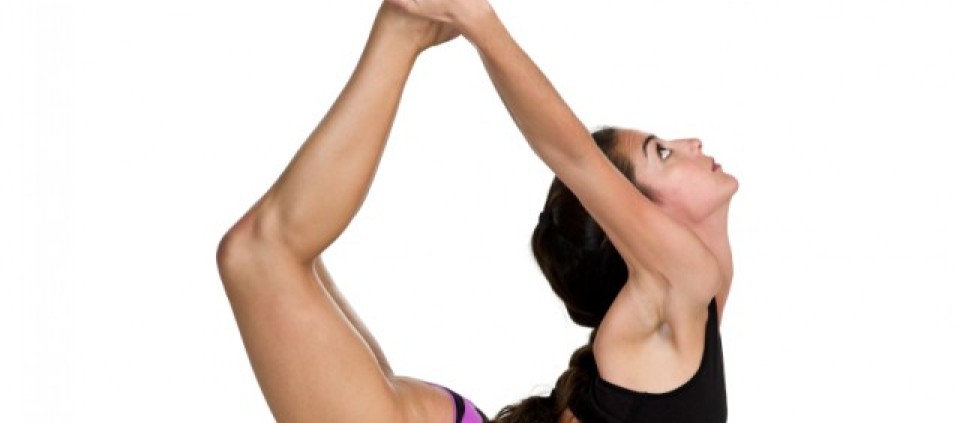Yoga in the Olympics?

by Valerie Reiss
When I started practicing Kripalu Yoga more than 20 years ago, the main lessons I got were: “Accept yourself, exactly as you are today,” “Don’t compare,” and “Don’t judge—yourself or others.” Those were all messages I desperately needed to hear that deeply planted seeds of healing in me.
The fact that the USA Yoga Federation has successfully registered yoga as an official sport, approved by the International Olympic Committee in 2016, pretty much blows every one of those sacred tenets to the moon.
A few years back, I went to “see” yoga at a theater in midtown Manhattan for the 2012 United States Yoga Asana Championship New York Regional edition. As a yoga junkie, I was curious—what exactly happens at a yoga competition? Who’s got the loudest ujayyi? Who can fidget least in Savasana? Who can keep their bottom ribs arced in Triangle?
I saw what this actually meant over three hours, watching about 36 competitors—10 men and 26 women by my count—each perform a seven-posture set in three minutes.
1. Standing-Head-to-Knee Pose (Dandayamana-Janushirasana)
2. Standing Bow Pulling Pose (Dandayamana-Dhanurasana)
3. Bow Pose (Dhanurasana)
4. Rabbit Pose (Sasangasana)
5. Stretching Pose (Paschimottanasana)
6. Optional Choice Posture
7. Optional Choice Posture
Photo courtesy of Valerie Reiss
Poses were judged by detailed alignment criteria for a total of 80 points, plus ineffables such as "grace" are considered. Every sequence was done in near-absolute silence, minus a churning fan. A variety of body types and a range of ages wobbled as best they could or flew through vertebrae-defying asanas. Watching the men was especially vulnerable viewing—seeing them tremble through peacock in nothing but a Speedo made me want to give them a blanket, or cry. So much poignant beauty, both athletic and unintended.
An emcee working the event kept a Friday-night party vibe going that was simultaneously awesome and inappropriate. After people struggled silently through complex poses, he jokily filled time with statements such as: "There are going to be all sorts of guys tuning in to watch this online. It's sick."
That, combined with the requirement that each competitor call out each pose before going into it—"Rabbit!"—made for downright surreal theater.
Does this all add up to something that could get yoga recognized as an Olympic sport some day? The first question being: Can you rally a huge, diverse community to a cause that makes its collective skin crawl? One bit of judging criteria is: "15 percent of total points are allotted to the overall attractiveness of the body. Choose an outfit that best enhances the body's shape and proportions." Um, I don’t want to judge, but: Yuck.
The other main problem for the championships is that after a while it’s pretty dull viewing, watching the same static poses, one after another. The only suspense is with the less experienced practitioners in Standing Head-to-Knee: “Will she fall?” (As one woman teetered out of the pose someone behind me actually let out a full snicker.) And most of the awe-filled moments are those that also have an ick-factor—that double-jointed, where-are-your-bones? freakish quality. And maybe that’s enough. That’s exactly how I don’t want to roll.
And yet, I love watching teachers demo challenging poses—it gives me something to aspire to and it can be simply lovely to watch a soul intimately unfurling in asana. If the yoga Olympics movement can somehow do this for yoga—reveal prana, exhibit strength and tenderness without invoking the inherent shame of feeling like a loser for not being able to do a posture exactly like the manual or a guy named Manuel—then it has a chance to touch the planet on a massive level. If not, then, well, I’d rather spend my yoga time uncomfortably yet happily struggling to love myself as I discover my limitations and limitless freedom.
Valerie Reiss is a writer, editor, speaker, consultant, and Kripalu Yoga instructor whose work has appeared in The New York Times, Newsweek, The Huffington Post, Women's Health, Natural Health, Yoga Journal, Beliefnet, Vegetarian Times, and more.
© Kripalu Center for Yoga & Health. All rights reserved. To request permission to reprint, please e-mail editor@kripalu.org.
